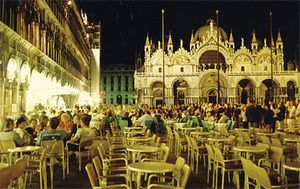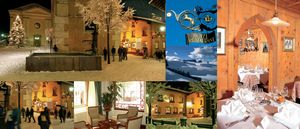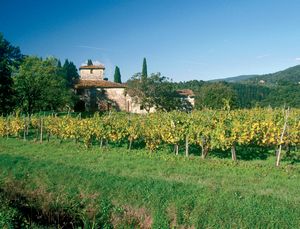The famously insular little city of Siena is a fascinating place full of beautiful buildings and artistic treasures; it is also home to one of Italy’s most glorious squares, the fan-shaped Piazza del Campo which provides the theatrical backdrop to the annual Palio. Millions of tourists descend on the city each year, but relatively few realise that Siena leads a double life and getting to grips with the whole issue of ‘contrada culture’ is something that for an outsider often remains elusive. The majority of visitors who pile into the Campo on two sweltering summer afternoons each year (July 2nd and August 16th) to watch the world’s most famous bareback horse race probably believe that the whole show is put on for their benefit, but they couldn’t be more wrong. ‘Il Palio’ is in Siena’s blood and plays just as significant a part in the life of the city today as it did centuries ago. A great historic event, it’s a very human one too, sweeping up the whole community on an intoxicating wave of excitement and tension. To begin to understand the Palio, you must also gain insight as to how the contradas work.
The Palio takes its name from the banner of the Virgin Mary awarded to the winner of each race. As a first step towards some kind of comprehension, it is important to realise that the contests are not mere sporting events, but rather a settling of old scores played out between Siena’s 17 contrade or districts. These well-defined neighbourhoods were once self-governing but now have a predominantly social, but nonetheless hugely important role. Each has its own mascot (mostly, but not exclusively, an animal; tortoise, goose, porcupine, owl, panther, wave, shell and so on), its own patron saint, flag, colours, museum, chapel and fountain. Each holds its own baptisms, weddings and funerals. If you are born within the city’s old walls, you automatically become a member of the relevant contrada, but membership can also be inherited, a system which applies to the majority of the Sienes who live in the modern suburbs. A visit to one of the contrada museums is a good place to start if you are interested in finding out a bit more about contrada culture; it’s also fun to wander round the quiet back streets and look out for little clues betraying your whereabouts, from charming ceramic animal plaques mounted on street corners to animal fountains tinkling away in quiet squares.
Superficially, all this seems very quaint, but old rivalries are not easily forgotten (resentment between the winning team and the runners up will last until the following year), and the days leading up to each race see an intense period of complicated preparation and a palpable build up of tensions all over the city. Within households with different contrada members, this can lead to major practical problems; cross-contrada couples are not supposed to share the same bed or even to sleep under the same roof immediately before the races.
Most visitors to Siena in pre-race days will not be aware of all this rumbling tension, but it’s certainly impossible to ignore Palio fever and outsiders can join in many of the festivities most of which take place on the four days preceeding each race. The ‘tratta’, a ballot to assign horses to the 10 contrade that will be represented in the race takes place in the Campo at 12.30 of the first day; the contrade must then go off and find the right jockey to whom they will pay vast sums of money to secure a win by fair means or foul. Six trial races are held in the Campo, the most important of which is the dress rehearsal in the late afternoon of the third day. After this, Siena sits down to dinner at a series of huge al fresco banquets, held in the streets of the various contrade to which outsiders are welcome. Book in advance and be prepared for mountains of food, rivers of wine and lots of boisterous speechmaking and singing. In complete contrast is the blessing of the horses which takes place on the two days of the Palio itself at around 2.30pm in the respective contrada chapels. These ceremonies are silent and intimate; it’s possible to gain access with a combination of luck and being at the right place at the right time.
The two hours of pageantry in the Campo that precede each race is, of course, open to all. The Sienese turn out in force to watch the procession of local big-wigs, flag-throwers and musicians all dressed in period garb. Sporting their relevant colours, the contrade stick together, their whistles and singing reaching fever pitch as the start of the race approaches. Everything is over in a flash; ninety seconds (three times round the square) of hysterical excitement culminating in tears of joy and despair from men, women and children who have spent the whole year building up to this moment. Needless to say, the celebrations by the winning contrada continue all night with yet another huge street banquet at which the horse takes pride of place at the head of the table.
To avoid four hours standing in the Campo itself under the baking sun (although this is probably the best way to experience the raw emotions of the Palio first hand), you need to plan well ahead. For the best close up view, a seat in one of the wooden ‘palchi’ on ground level is recommended (this will cost from around €200-€350), but to watch in comfort, rent an apartment with a balcony on the piazza and make sure it comes complete with cocktail waiter.
Contact the Siena tourist office
(Piazza del Campo 56,
0577 280551)
for further information.







